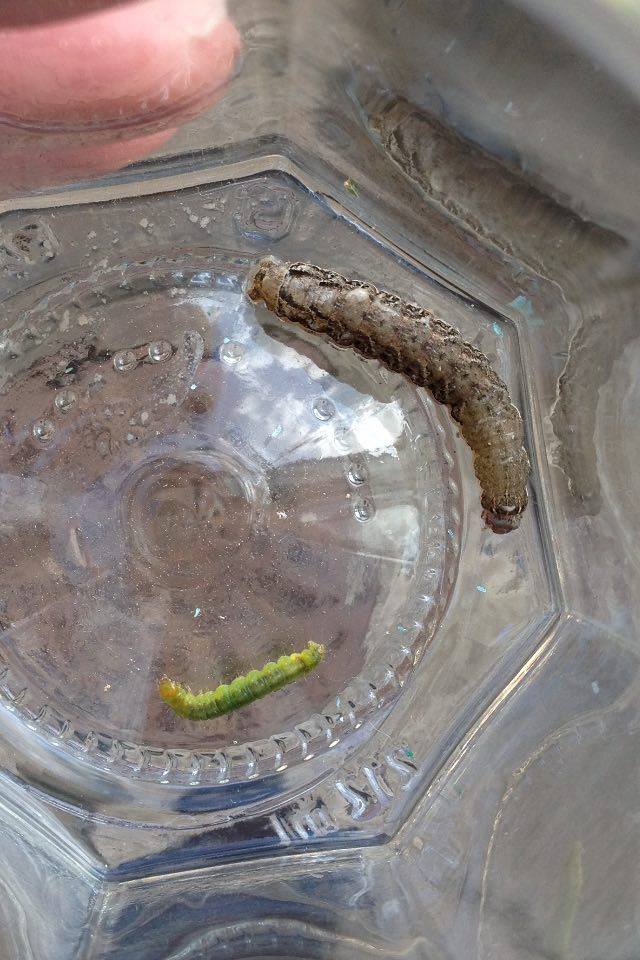This Forum will close on Wednesday 27 March, 2024. Please refer to the announcement on the Discussions page for further detail.
These caterpillars are kicking my garden's a*se.

The big one is one of many that are hiding in the base of my Globemaster Alliums, I've been carefully picking them out with my narrow-nosed pliars. But the next day they must come back from the dead because I'm finding them again.
The smaller one had snuggled himself in a folded Pyracantha leaf. I never knew Pyracantha's had this enemy. Is it a different type of Moth to the bigger one?
Also, I have a 2yr old honeysuckle, and the big one in the jar LOVES to strip it bare. I think it's their favourite thing to do in the whole world.
Can anyone give me advice on removal and what type of Moths they become?
Should I go all chemical warfare on them?
Any help would be really appreciated.
0
Posts
They look like the caterpillars of a moth from the Noctuidae family, possibly a large yellow underwing/lesser yellow underwing or something similar. There's bloody hundreds of moths from this family and the bad news is that they aren't too picky on their diet and eat many different types of plants and can even eat poisonous plants without killing themselves, pretty hardy beasties. I found two of these in my garden the other week.
From what I recall many of these moth caterpillars overwinter as larva and complete their cycle in the next few weeks so the chances are they will start burrowing to pupate fairly soon and leave you in peace!
The green one could be a sawfly larva but I'm not 100% sure. A caterpillar has four sets of sucker type legs in the middle and a set at the back. A sawfly larva will have seven or eight sets (can't remember exactly the number but they definitely have more)
I wouldn't go nuclear on em, just think of the wonderful pollenating moths they will become!
.......... and the baby birds they will feed
Leaves eaten at this time of year will re-grow (well, maybe not the alliums, but they have too many leaves anyway ).
).
As has been said - they're part of the rich cycle of life in your garden and those that escape the birds' attentions will go on to become pollinating insects for your plants. Some things we just have to put up with
Gardening in Central Norfolk on improved gritty moraine over chalk ... free-draining.
Had one of the bigger dark beasties munching on my Lupins the other night!
Something like the large brown one was munching a couple of elephant garlic in my polytunnel last week. They went onto the bird table so had a small chance of survival if quick enough!